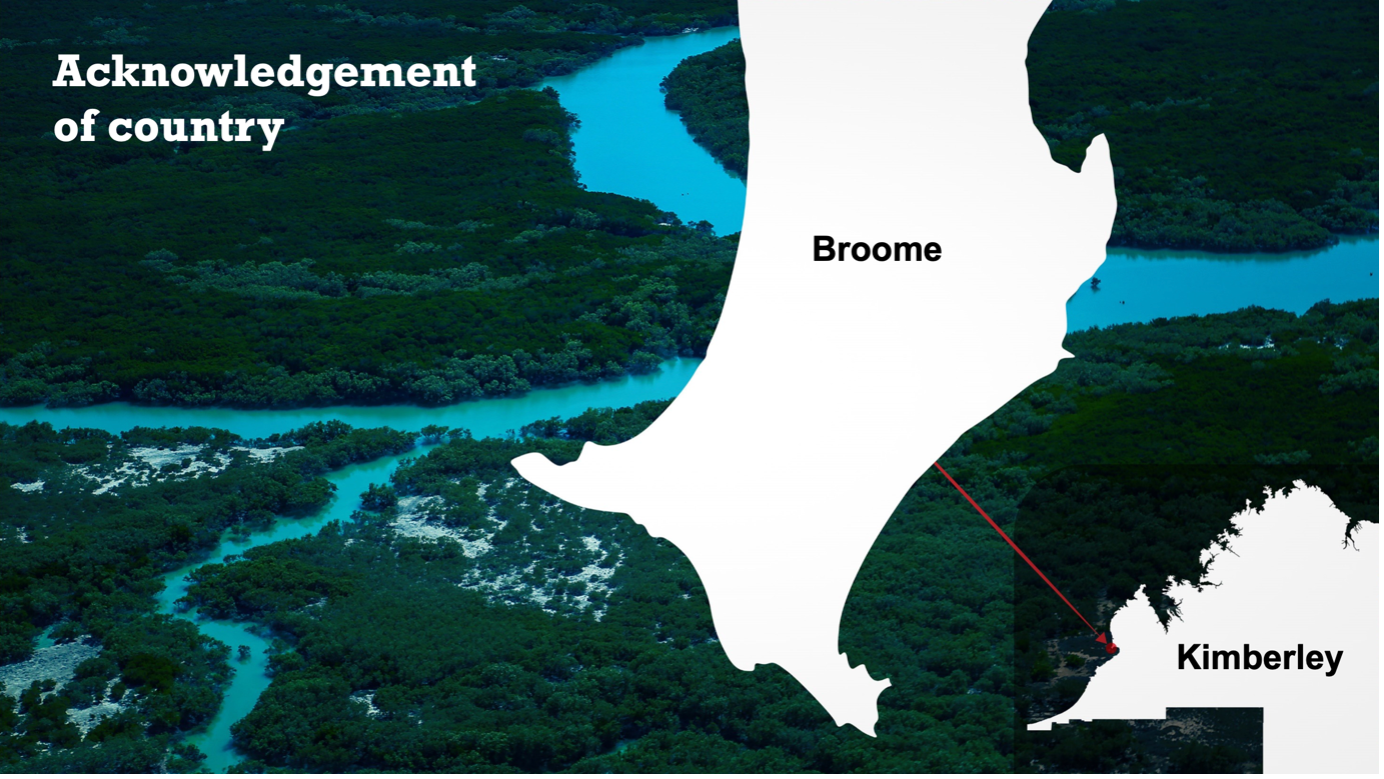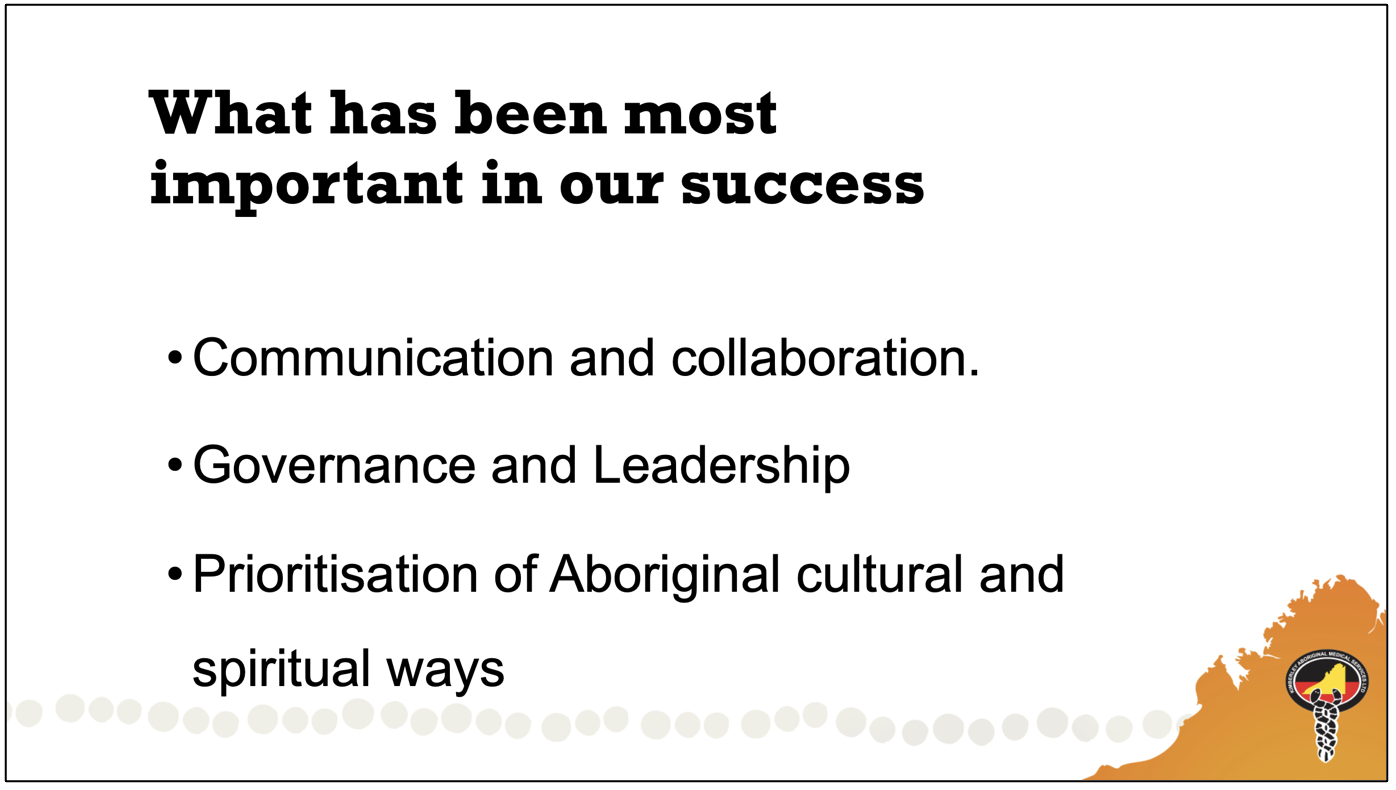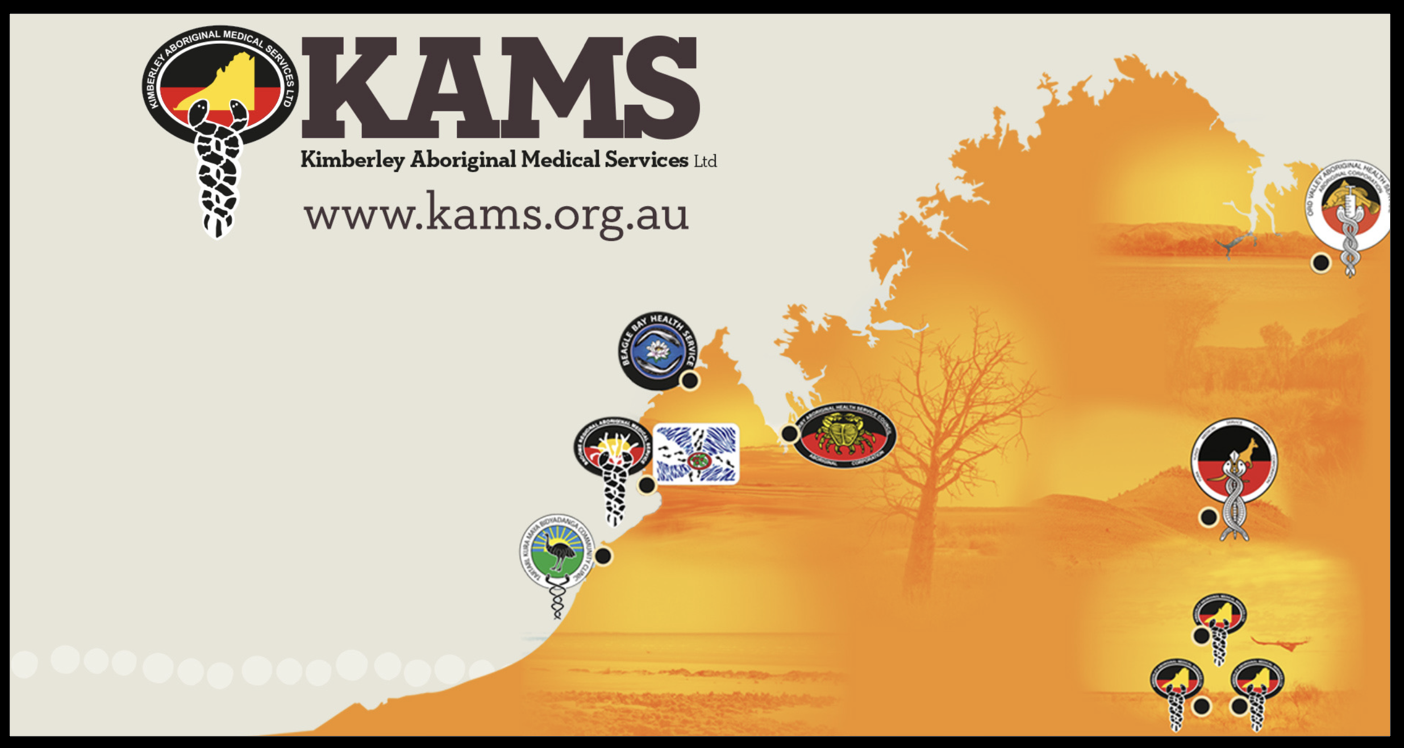Introduction by Croakey: At last week’s Communicable Diseases and Immunisation Conference, Dr Lorraine Anderson shared some valuable insights from the Kimberley Aboriginal Medical Service’s response to COVID-19.
Medical director at KAMS, Anderson showcased their quick response to the pandemic, urging all conference delegates to consider the Aboriginal Community Controlled Health Organisation (ACCHO) model of care to “help bring all people on board in the health space”.
In her presentation, Anderson said that communication, leadership, governance and the prioritisation of Aboriginal cultural and spiritual ways, self-determination and empowerment were critical.
Read Anderson’s full presentation below, as delivered at the conference on 21 June.
Lorraine Anderson writes:
I’d like to acknowledge the Yawuru people as the Traditional Custodians of the lands on which I live and work and who I will be talking about today, and pay my respects to ancestors and Elders past, present and emerging.
I extend this respect to all custodians and Elders in the communities of the Kimberley where I visit and work as well.
Today we’re on Gadigal country and I’d like us all to reflect on what a privilege it is that we are able to be here on this country to share, breathe the air and leave our footprints – thank you.

I’m Lorraine, I have ancestral links to the Palawa people of Tasmania. I spent my younger years in New Zealand and you’ll pick the accent here and there.

To set the scene, I’d like to introduce you to the Kimberley. The Kimberley region is in the Northwest of Western Australia. It is a large and remote region of the country – about the same size as Germany. It is 1,157 km from one side to the other so takes 12 hours to drive if you don’t stop.
In the Kimberley, we have over 120 remote Aboriginal communities.
Kimberley Aboriginal Medical Services (KAMS) is a member service organisation, and while our major role is in regional advocacy and support for member services, KAMS also provides comprehensive primary health care in five remote communities.
In 2014 KAMS established the Kimberley Renal Services (KRS) to manage the provision of renal support and dialysis services. We now have four renal dialysis units operating across the region and this will soon expand to five.

KAMS is a member of the Aboriginal Health Council of WA (AHCWA) and the National Aboriginal Community Controlled Health Organisation (NACCHO).
In February 2020, KAMS implemented a number of planning and decision-making groups to assist in a timely and effective COVID-19 response for the organisation.
We set up three important response groups:
- Leadership Group – responsible for decisions related to management and oversight of the KAMS COVID-19 response
- Clinical Response Group – to give advice on the clinical response
- Communications Group – which developed and distributed approved communication materials
Each group reported to the KAMS COVID-19 Command Centre which covered high level strategic decisions and reported further through to the KAMS/KRS Boards who, for our organisation, hold ultimate responsibility and accountability for all organisational matters.
This structure was vital to the coordinated and timely response we were able to make.
The usual disaster to hit the Kimberley is cyclones and we used this theme throughout our COVID-19 communications both within KAMS and in our communications to community.
The cyclone warning system is something we are all familiar with – communities recommended we adopt something similar and this became a feature throughout our response.
In early 2020, the Kimberley experienced the highest number of COVID-19 cases in regional Western Australia {at that time}. Swift regional and state-wide action rapidly brought the outbreak under control and there were no positive COVID-19 cases in Aboriginal people.
Three-stage alert system
The definition of each alert level is:
Green – No community transmission of COVID-19 within a site
Amber alert – Limited community transmission of COVID-19 within a site
Red – Sustained community transmission of COVID-19 within a site
This is similar to what we saw on a national, state and territory level, but with a regional nuance.
This three-stage COVID alert system was implemented to help guide actions and decisions impacting staff and operations throughout the pandemic.
A site may be defined as a town, remote community, individual remote clinic / renal centre or an entire region depending on the nature of the confirmed cases.

These alert levels were also used across the organisation relating to all areas of risk. For example, with the identified vulnerable employees we have:
- green alert (no increased risk of exposure)
- amber alert (increased risk of exposure)
- red alert (high risk of exposure)
And with each risk level there is a list of actions related to that level and the vulnerable employees.
Outbreak planning and escalation flow
Outbreak planning is a standout in regards to our response.
KAMS had a plan that in the event of one or more COVID-19 cases in the Kimberley, we were to initiate a series of actions to support a coordinated and timely response.
The KAMS response was designed to ensure that there were clear lines of communication and decision making.
If a COVID-19 case was confirmed by one of Health Centres, the Health Centre immediately notified the KAMS Medical Director. I then notified KAMS command and control group.
The KAMS CEO stood up the KAMS Incident Management Team (KIMT) within 60 minutes.
KAMS Incident Management Team received the initial situation report and was charged with deploying rapid response teams to communities within hours to coordinate the local response.
The rapid response teams included not only clinicians but also social and emotional wellbeing and non-clinical staff who had been trained to don and doff PPE, how to educate community, how to communicate with community, how to swab noses, to provide administration support, support outbreak reactive vaccination and of course contact tracing.
All of this was done while communicating directly with communities and also the WA Country Health Service and the Kimberley Public Health Unit.
Scenario testing
In the Kimberley multiple multi-agency drills or scenarios took place. Within KAMS we managed scenario testing in all of our remote clinics which covered not just triage and management of the patient but also testing and PPE use.
These drills allowed us to test and practice our systems and to improve as we went…and when the time came this practicing set us in good stead.
Very early on in the pandemic the KAMS clinical toolkit for COVID-19 was established and published on our website at the end of March 2020. The toolkit is a guideline for our clinics on the management of clinics and patients through a pandemic.
It covers processes for keeping clinics safe from COVID, testing and evacuation of patients. This is a living document which translates the national and state instruction into workable options for the remote community clinics.
As part of the COVID-19 response, the Australian Government funded a COVID-19 point of care program for many Aboriginal health services, recognising that delays in test results can hinder public health responses, and a positive COVID-19 case in a remote Aboriginal community had the potential to rapidly cause an outbreak leading to high levels of morbidity and mortality.
The point of care selected for the program was the GeneXpert platform – many of the remote clinics already had this testing capability for STI testing and were familiar with the technology.
The ability to identify and isolate cases as soon as possible through point of care testing has made a significant difference to the remote community clinic responses and ability to respond to positive cases.
Prior to point of care testing in communities we were having to isolate symptomatic patients and evacuate them by air and road into Broome for testing and further isolation while awaiting test results – this was a logistical nightmare, used a lot of resources and caused a lot of concern for community members, not to mention a reluctance to present with symptoms.
Telehealth and Kimberley Renal Services response
Telehealth has played a big role in our ability to maintain primary care services in the KAMS remote clinics. We reduced the number of providers moving into and out of communities but maintained good support and developed some robust processes for telehealth which will be used into the future, especially where weather reduces the services we can provide.
The renal dialysis units we manage were identified as a very high-risk environment for spread of COVID. We brought our large mobile dialysis unit into Broome and used this for dialysing patients who were symptomatic and/or awaiting test results.
We also set up specific isolation bays in each of the units and had workflow processes ready to roll out if there were any positive cases associated with renal dialysis patients.
Keys to success
What has been most important in our success:
Communication: Between the KAMS Leadership and staff, between KAMS and Westeran Australia Country Health Service-Kimberley Public Health Unit, KAMS and other lead agencies such as WA Police, Department of communities, Kimberley Land Council and Department of Fire and Emergency Services, and most importantly between KAMS and community members.
We developed localised messaging and graphics designed by our communications teams in language and in creole and these were rolled out quickly. Local community consultation and involvement was very important for good and accurate communication. In addition, we were engaged in the remote community pandemic plans in a supportive role.
Governance and Leadership: Having a head start with our infection prevention and control leadership and forethought got us a head start – by the end of January 2020, we had pandemic boxes ready to go for each community and a pandemic plan…albeit woefully inadequate considering what was about to unfold.
This was followed by the rapid implementation of the reporting and management structure within KAMS. Keeping an eye on staff and patient safety first and foremost while maintaining services clearly defining roles and responsibilities.
Prioritisation of Aboriginal cultural and spiritual ways, self-determination and empowerment. This translates into shared decision making, good governance and community control – ensuring Aboriginal and Torres Strait Islander Community Controlled Organisations, and state Affiliates had representation and input into all aspects of COVID-19 planning and response in their communities.
We’ve developed a collaborative partnership model which includes key public health, clinical health services and community, with Aboriginal and Torres Strait Islander representation embedded in the central pandemic management teams across the Kimberley.
We’ve been represented by our Aboriginal staff in working groups and expert panels including the Commonwealth COVID-19 Indigenous Advisory Group, the Commonwealth COVID-19 point of care testing advisory group, the WA COVID-19 Aboriginal Advisory group, COVID-19 clinical evidence care panels, Kimberley Regional Emergency Operations Committee and the Kimberley Operational Area Support Group.
Leadership by Aboriginal and Torres Strait Islander Community Controlled Health Services (ACCHS), their Affiliates in each State and Territory and the peak body, National Aboriginal Community Controlled Health Organisation (NACCHO) has been paramount.
Partnerships with communities, other Aboriginal Community Controlled organisations, the Australian Govt and States and Territories have been vital, and regional relationships.
Reflections
The COVID-19 pandemic has disrupted us all but on moving beyond the pandemic we can reflect on innovation as a result including:
- Telehealth
- Point of care testing
- Recognition of the importance of Aboriginal Health Practitioners – this pandemic has raised the profile of this group of clinicians in our region significantly.
- Widening of contract tracing roles to ACCHS and non-clinical staff
- Use of POCT for testing a range of diseases, not just COVID
- Governance and Leadership – it worked we need to maintain it post COVID
- Clinical Improvements – how can we translate this success into other disease responses – syphilis is already a discussion point – how can we take what worked for COVID and see if we can make it work for syphilis
- Recognition of the Aboriginal Community Controlled Health Sector as a core part of the architecture for delivering comprehensive primary health care in Australia.
If you don’t know what the ACCHO Model of Care is – suggest you Google it and consider what it has to offer, not only in terms of engaging with Aboriginal people but also how this model can help bring all people on board in the health space.

View the presentation slides here.
Read Croakey’s extensive archive of articles on Indigenous health.









